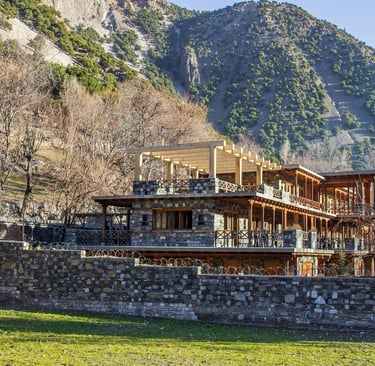Chilam Joshi, the Kalash Festival
Nestled in the remote valleys of Pakistan's Khyber Pakhtunkhwa province lies the enchanting Kalash Valley, home to the indigenous Kalash people. Among their vibrant cultural tapestry is the festival of Chilam Joshi, a celebration that ushers in the arrival of spring, echoing the deep connection between the Kalash community and the natural rhythms of their mountainous surroundings. Let's delve into the captivating world of Chilam Joshi and explore the unique customs, rituals, and the profound significance it holds for the Kalash people.
The Kalash People:
The Kalash are a distinctive ethnic group with a history that traces back thousands of years. Residing in three remote valleys—Bumburet, Rumbur, and Birir—the Kalash community is renowned for preserving their ancient traditions, language, and religious beliefs, setting them apart in a region marked by diversity. Their unique cultural practices have garnered fascination and admiration from people around the world.
Chilam Joshi and the Arrival of Spring:
Chilam Joshi, celebrated annually in mid-May, marks the beginning of the warmer months and the blossoming of nature in the Kalash Valley. The festival serves as a joyous testament to the Kalash people's agrarian lifestyle and their deep-rooted connection to the land.
As the snow on the surrounding peaks begins to melt, the Kalash Valley transforms into a riot of colors with flowers blooming, creating a picturesque backdrop for the festivities. Chilam Joshi encapsulates the spirit of rejuvenation and abundance, embodying the Kalash people's gratitude for the fertile land that sustains their way of life.


Chitral - KPK Pakistan
Preparations and Rituals:
Preparations for Chilam Joshi commence well in advance, with the Kalash community engaging in a collective effort to ensure the festival's success. Houses are meticulously cleaned and adorned with colorful decorations, and traditional attire is carefully crafted for the occasion. The entire valley becomes a canvas for creativity and communal spirit.
One of the central elements of Chilam Joshi is the cultivation of the Kalash fields. As part of the festival, young boys and girls venture into the fields, singing traditional songs and performing dances that reflect their agricultural lifestyle. The rhythm of their steps mirrors the beating heart of the community, echoing through the terraced fields carved into the mountainsides.
Chilam Joshi Rituals:
At the heart of Chilam Joshi are the various rituals performed by the Kalash people to ensure a bountiful harvest and seek blessings for the community. The festival involves offerings to various deities, with the Kalash people believing in a pantheon of gods and goddesses that govern different aspects of their lives.
One key ritual involves the distribution of milk, a symbol of purity and prosperity, among the community members. The local brew, often referred to as "tara," flows freely, fostering a sense of camaraderie and unity. The festival is also an occasion for matchmaking, as young Kalash men and women participate in traditional dances and social interactions, providing an opportunity for potential couples to form connections.
Chilam Joshi in the Modern Context:
While Chilam Joshi remains deeply rooted in tradition, the festival has also evolved to embrace contemporary elements. The influx of tourists and the global exchange of cultures have introduced new dynamics to the celebration. The Kalash Valley, once secluded, now welcomes visitors who come to witness the unique customs and partake in the festive atmosphere.
However, this intersection of tradition and modernity has posed challenges for the Kalash community. The impact of tourism on their cultural heritage, coupled with external influences, has sparked conversations about the need to strike a balance between preserving the essence of Chilam Joshi and adapting to changing times.
Preserving Cultural Identity:
In recent years, efforts have been made to preserve and safeguard the cultural identity of the Kalash people. Initiatives aimed at documenting and promoting Kalash traditions, languages, and folklore have gained momentum. Additionally, educational programs within the community focus on transmitting the rich cultural legacy to younger generations, ensuring that Chilam Joshi continues to be a vibrant celebration for years to come.
Conclusion:
Chilam Joshi, the Kalash festival of spring, stands as a testament to the resilience and cultural richness of the Kalash people. In the midst of the breathtaking mountains and terraced fields, the festival unfolds as a tapestry of colors, music, and rituals, weaving together the past, present, and future of this unique community.
As the world marvels at the beauty of Chilam Joshi, it is crucial to approach its celebration with respect for the Kalash people's way of life. The festival serves not only as a celebration of nature's bounty but also as a reminder of the importance of preserving cultural diversity in a rapidly changing world. Chilam Joshi, with its ancient roots and contemporary adaptations, remains a testament to the enduring spirit of the Kalash Valley, inviting all to witness the magic of spring through the lens of a remarkable cultural celebration.
Address
Soan Garden, Islamabad
Pakistan
Contacts
WhatsApp: +92-321-9012647
Email: shafqat@foodandfestivals.com